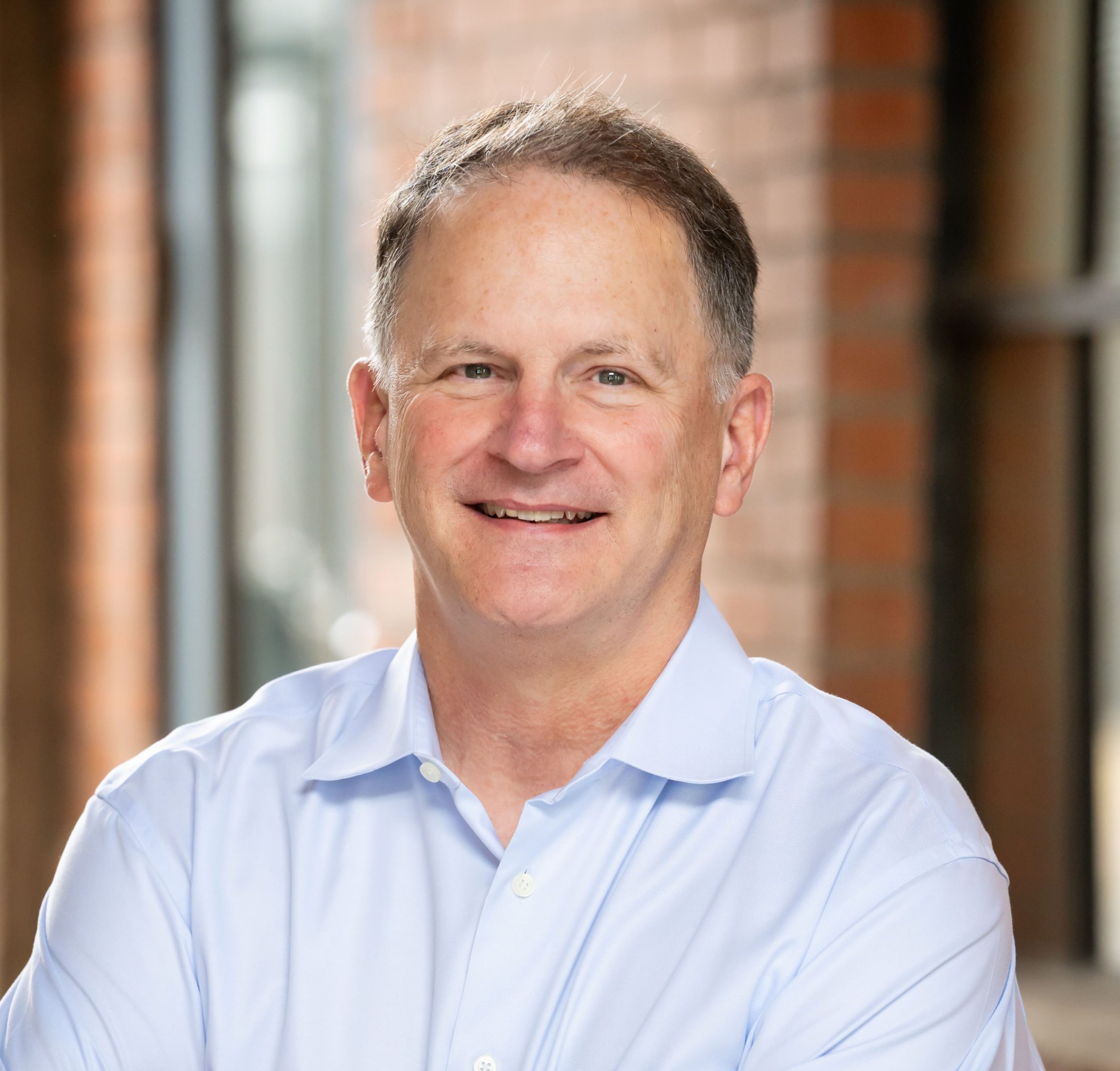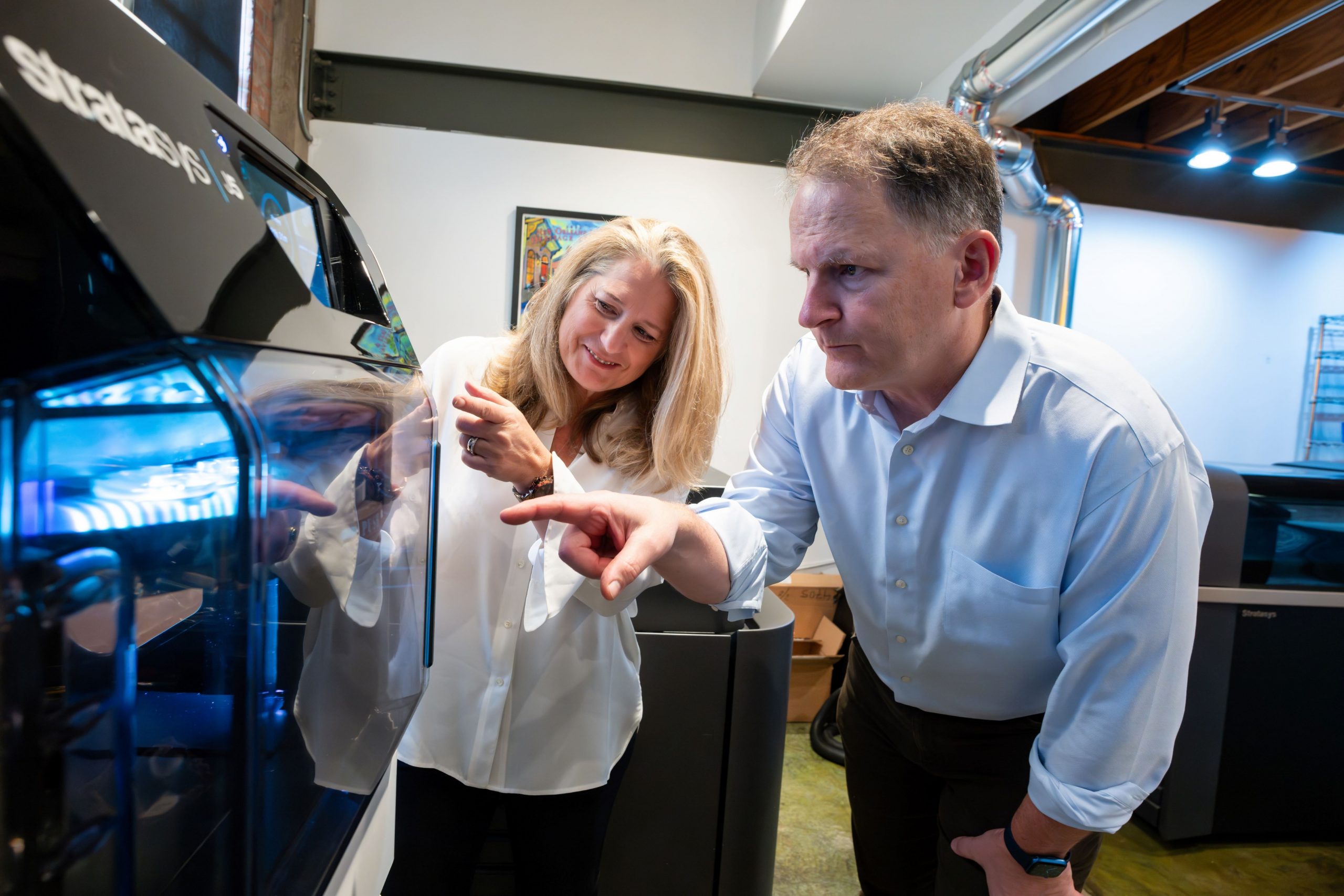
Brian Buss is Executive Vice President of MedCAD. In this interview, he talks about the company’s origins, its innovative approach to medical devices, and the unique mindset it takes to be a leader in the field. We’ll follow with a Part 2—a look at MedCAD’s exciting future—in the weeks to come.
Q: What’s your role at MedCAD, and what was your path to get there?
Brian Buss: Nancy and I have been a synergistic team for many years. Even prior to me signing up and joining MedCad, I used to come to Nancy’s design consultancy and get some prototype help, as well as some advanced design work for usability and user interface on some of the products we were developing.
In my past, I had been a product engineer and R&D manager in defense, aviation, and automotive businesses. In 1994 I was invited to be on the founding team at OsteoMed, a medical device company started by my brother in Dallas, TX. After Osteomed was acquired, I joined the same founders of OsteoMed in another venture focused on the aesthetic medical device market. So I’ve been in the medical device industry for over 30 years, and about three or four years before I joined Nancy we got to know each other and she helped me greatly with some of the more advanced designs that I needed. A lot of that was leveraging her abilities with 3D printing and 3D design, where she was already an expert.
Q: As Executive Vice President at MedCAD, do you have a particular area of oversight?
Brian Buss: Building the teams, I would say. Really the overall operation, the organization of the company and making sure that we’re well staffed on the technical side of the company.
“I consider us the ER of the medical device business.“
Q: What does a typical day look like in that job?
Brian Buss: It can vary greatly. I consider us the ER of the medical device business. What walks in the door often impacts us all, and that often translates to expediting products that need to be delivered for customers on an urgent basis. Typically, when we’re operating on a more strategic level, my job is to make sure that we’re well staffed and well-resourced and helping with team building and leadership building in the operations and engineering areas of the company. Recently, I am focused on developing an engineering corps of two to three engineering leaders in the company that can be looked at as resources
for all the departments.
So for the complicated problem solving that’s often required for projects including product development projects, we’re developing young leaders and engineers to drive those technical efforts and decisions. It’s the nature of customized design that we are in a position of performing designs for the first time every time. 3D technologies are fairly new to our industry and so a lot of the engineers that we’re putting in these roles are new to it as well. So you can’t just go out and find people that have the built-in experience to deal with these problems. We have to develop it internally.
Q: And you’re not just teaching them skills, you’re teaching them how to innovate? Expecting them to be inventors essentially?
Brian Buss: That’s right. It takes a lot of guts to deal with the unknowns in our business and create the necessary solutions. Designers and engineers in our business are in positions daily to solve issues that often lack input they would need for absolute certainty. Developing experience in how to mitigate the risks and make the best design decisions under the time and information constraints provided by our surgeon-customers is an area of expertise that we believe MedCAD excels at, and that sets our teams apart.
Nobody’s put together the consummate textbook on how to do a customized patient-specific medical device company. I would describe our company as founding a new field of engineering that’s uniquely able to support this kind of care.
Typically, engineers go to school and they’re taught to be good at problem solving, but that’s where the knowns are a given versus the unknowns. Our designers and engineers definitely possess an added “intuitive sense” to their technical skills; it’s their ability to make decisions when sometimes there are more unknowns than knowns. And it’s an uncomfortable position for many engineers to be in, but it’s an absolute must in order to be effective at customized design.
We can make better products than others by allowing ourselves to be a little more adventurous. Typically a medical device company will try to put a lot of options on a shelf, but we get one shot at making the best device for a particular patient and that’s it. We have a great responsibility to make the best decisions. And so we try to look at every case as if this were a family member and we have one chance to restore their anatomy—and that’s our specialty.
Q: How big is the team right now?
Brian Buss: The MedCAD team is nearly 50 members now and growing.
“Many of our designers have more virtual surgical experience than many surgeons have doing real surgery.”
Q: What do you see as MedCAD’s leadership role? What is it a leader in and what is it doing differently?
Brian Buss: Medcad is uniquely positioned to be an aggressive, forward-thinking, and consistently implementing company. We’re not inhibited like larger med device companies are with a large structure, and we don’t have to have five different layers sign off on ideas. So we’re more nimble and more flexible. Change happens fast here and often which is a good thing and a bad thing. The good part of change is that we can move very quickly and innovatively and when we see a good idea we can chase it and we can apply our resources quickly. Whereas in many companies that don’t have customized devices or mindsets by design they have so much mass and momentum in one direction they can’t or often don’t realize when they’ve made a mistake and have to redirect or pivot. And we’re very good at adjusting. We’re very good at being capable of pivoting and moving in a direction very quickly and chasing it down.
For instance, Nancy started our custom med device company by applying our skill sets to medical from commercial-based custom products. Moving the company to cranio and oral maxillofacial planning, and working directly with surgeons together on a virtual surgery was a huge pivot and monumental step. I mean you’re going from one industry to medical, a very complicated service and building relationships with doctors. That’s unprecedented. Before customized, medical doctors would basically buy from a catalog. Now they’re actually working hand-in-hand with our team of designers and engineers to realize the best solutions, and not just the device but the plan for that surgeon. So that was a very big step for MedCAD and the medical device industry really.

Nancy Hairston, MedCAD CEO, and Brian Buss viewing a 3D Print in progress
—
2025 | MedCAD
